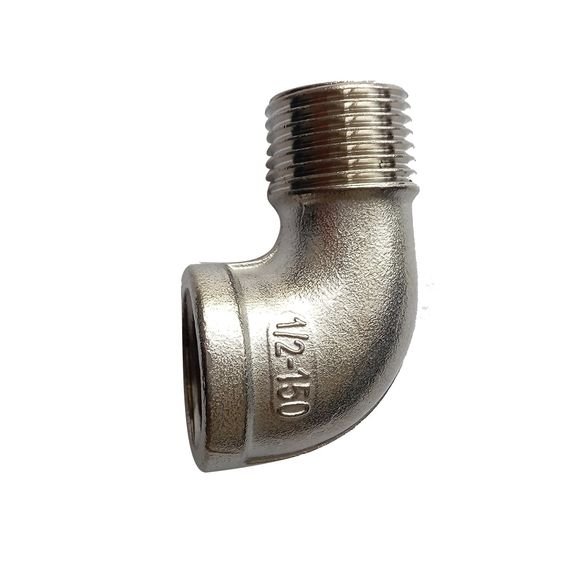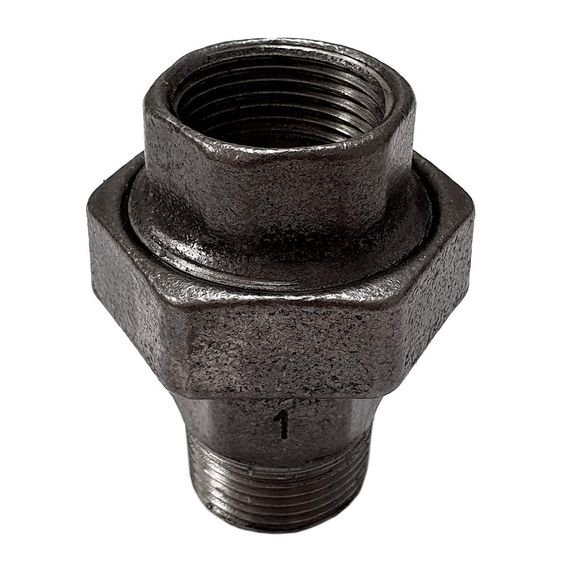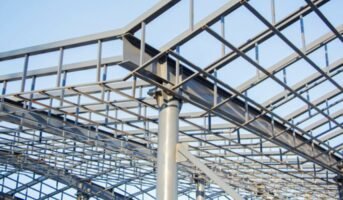Any piping or plumbing system utilised in a commercial or industrial setting will need pipe fittings. Pipes may be connected or fitted in the correct location with the help of fittings, which also enable the pipes to be closed off or terminated as required. There is a wide range of types and sizes to choose from while searching for pipe fittings.
While there is a specific kind of fitting for every conceivable pipe or tube, these fittings often have a number of common characteristics. In this article, we will go over the various kinds of pipe fittings that are available, as well as the process for selecting the appropriate one.
Different types of plumbing fittings for various applications and needs
Here is a list of some of the most common types of pipe fittings used in a commercial or industrial setting.
Elbows

Source: Pinterest
This kind of pipe fitting is used to reverse the flow of water. Because of their widespread use in plumbing, they are typically manufactured in only two main angles: 90 degrees and 45 degrees. A 45-degree elbow is more common in potable water infrastructure, electronics and chemical industrial transmission connectivity, food and air-conditioning transmission lines, garden fabrication, agricultural production, and solar-energy services, while a 90-degree elbow is used predominantly to hook up pipework to water pumps, control valve, and deck drainage channels.
Couplings

Source: Pinterest
To repair broken or damaged pipelines, a coupling is employed. It’s important that the diameters of the pipes being joined be consistent. Slip couplings and standard couplings are the two types of couplings used throughout the plumbing. Rubber sealing or gaskets are installed on both sides of the regular coupling to keep the leaks at bay. The slip coupling already has two pipes that may be used to fix the long pipes that have been damaged.
Union

Source: Pinterest
Unions are a kind of pipe fitting that perform many of the same duties as couplings, with one major difference: they may be removed at any moment, whereas couplings cannot. In order to prevent galvanic corrosion from occurring, several dielectric unions are utilised to link pipes composed of different materials. These threaded pipe connections include both female and male ends, as well as a nut.
Adapter

Source: Pinterest
When a pipe does not have a fitting at either end, or when the length has to be extended, an adapter is used to make it work. Depending on the situation, these pipe fittings may convert female pipe ends into male threaded ones. It enables the joining of dissimilar pipes without the need for elaborate preparation. They are often used for plastic or metal piping.
Nipple

Source: Pinterest
This is a slender butt of piping that serves as a connection to two other fittings that have male threads. Both of the other fittings have male threads. A form of pipe fitting known as a close nipple is distinguished by the presence of continuous threading on its surfaces. The vast majority of their applications are found in hoses and piping.
Reducer

Source: Pinterest
The discharge capacity of the pipe may be adjusted using this option to make it larger or smaller, depending on your preference. There are two distinct varieties of reducers: eccentric and concentric. The earlier one is designed in the form of a funnel and functions to gradually reduce the diameter of the pipe. The latter one is designed such that one of its edges faces the opening of the connecting pipe, minimising the possibility of air collection.
Tee

Source: Pinterest
The plumbing system makes use of this T-shaped pipe fitting, which has one inlet and two outputs set at a right angle to the supply line. The purpose of this fitting is to unite the flow of water from two separate pipes into a single one. The term “equal tee” is used to describe this fitting when its three sides are equal in size; “unequal tee” is used otherwise.
Cross

Source: Pinterest
There are four access points in each of the four cardinal directions on this kind of pipe fitting. The four pipes that converge at this fitting are connected to it. Water may flow in any of the four possible directions, depending on whether there is one intake and three outputs, or vice versa. These pipe connections are standard issues for fire sprinklers.
Flanges

Source: Pinterest
A flange is a kind of pipe fitting that is used to join pipes, motors, regulators, and other systems together. It’s simple to clean and check the entire mechanism from the inside, a feature that they provide as standard. Bolts are used to create a watertight seal once they have been welded, threaded, or screwed onto the pipes. They have a variety of industrial and domestic uses, including usage in home pump systems.
Caps & Plugs

Source: Pinterest
Both of these pipe fittings serve the function of partially or completely sealing off the open ends of pipes. It is possible to preserve the pipe for further usage by threading in a set of plugs and fitting them inside. Depending on the pipe’s composition, a cap may be attached in a variety of methods, including soldering, adhesive, or threading.
Bushings

Source: Pinterest
These fittings reduce the diameter of the bigger pipe to match the diameter of the smaller pipe, allowing pipes of various diameters to be joined together. Although unions and couplings serve the same function, they take up far more room than necessary, whereas bushings may sometimes be threaded the correct way around.
Wyes

Source: Pinterest
Drainage systems rely on these 45-degree branch lines in pipe fittings to maintain a constant water flow. For horizontal connections where sanitary tees don’t function, a wye is required.
Valves

Source: Pinterest
To control the flow of water or gas, plumbing relies on valves. Throttling, isolation, and a complete ban with no chance of return are the three main kinds. Isolation valves are employed to temporarily cut off a section of the pipe system so that it may be serviced or repaired. Throttling valves are resilient devices used to control the flow of a liquid via a conduit.
Barb

Source: Pinterest
If you need to attach some pliable tubing to some pipes, a barb would be another handy pipe fitting to have on hand. One extremity is male-threaded to fit into female-threaded connectors, while the other side may be either a single or many barbed tubes to fit into the flexible tubing.
Pipe fittings: How do pipe fittings and pipes connect?
Male pipe fittings are designed to be used with other male pipe fittings, whereas female pipe fittings are designed to be used with other female pipe fittings. Female threads are located on the interior of a threaded pipe fitting, whereas male threads are located on the exterior. Street fittings are pipe connections that feature a female side and a male side. There are two different methods for connecting pipes or tubes that employ pipe fittings:
By threading
Pipes with threaded ends may be connected to one another by screwing them together. Threading and threaded fittings are both common features of metal pipes and fittings.
By slip-fit
Pipes that slip-fit have sleeves that may be inserted into one another. The plastic pipes may either have a threaded connection or a slide-fit connection.
Guide to selecting the right type of plumbing fittings for your project
When selecting pipe fittings, several considerations need to be taken into account. The following are some of them:
Connection types
When shopping for pipe fittings, keep in mind that a single fitting may have two distinct connection types. The fitting might have a female thread on one end and a male thread on the other. Plastic fittings may have a male slip on one end and a threaded end. Also, they may have identical ends that can be shaped to fit any specification.
Exploring various materials used in plumbing fittings
As a general rule, the material that the pipe fitting is made of should be the same as the material that was used in the production of the pipe into which it is going to be fitted. Nevertheless, there are circumstances in which materials that comply with certain rules or standards may also be utilised in pipes made of a different material.
Check for flow
Maintaining a constant flow requires that the extremities of pipe fittings be somewhat bigger than the remainder of the pipe in order to permit connections without reducing the ID of the pipe.
Types of flexible plumbing fittings and their advantages
In addition to the materials used to construct pipes, pipe fittings may be classified according to the kind of fitting they are: threaded, slip, male, or female.
Size
It’s important to remember that male threaded pipe fittings are measured to the outer diameter (OD), whereas female fittings are measured to the inner diameter (ID) of the inlet when determining their size.
Thickness
In the same way that pipes come in a variety of various wall thicknesses, sometimes known as “schedules,” pipe fittings also come in a variety of different thicknesses.
Design
Each pipe and tube is constructed to be able to transport a particular set of liquids, fluids, gases, and chemicals under a variety of different situations. As a direct consequence of this, the pipe fittings may be purchased in a wide number of configurations.
Standards and codes
The various pipe fittings are ranked according to particular standards and norms that have been established by a variety of different organisations. For instance, ASTM, ASME, and BSP are all examples of standards that have been given to pipe fittings, and those specifications regulate how pipe fittings should be used.
FAQs
What is the purpose of pipe fittings?
Pipe fittings, sometimes called pipe connectors, are used to join two pipes together to increase the total length of the system or reverse the direction of water flow. These come in a range of sizes to accommodate the pipe to which they will be connected, and they are used to perform operations such as merging, splitting, or reducing water flow.
How do you figure out what size fits?
Take a reading of the male thread's outside diameter (OD), and the female thread's inside diameter (ID). The size of the thread may be estimated using this value. Threads on a pipe fitting may be measured, and the nominal size can then be determined by comparing the measured value to a thread chart.
| Got any questions or point of view on our article? We would love to hear from you.
Write to our Editor-in-Chief Jhumur Ghosh at [email protected] |
Housing News Desk is the news desk of leading online real estate portal, Housing.com. Housing News Desk focuses on a variety of topics such as real estate laws, taxes, current news, property trends, home loans, rentals, décor, green homes, home improvement, etc. The main objective of the news desk, is to cover the real estate sector from the perspective of providing information that is useful to the end-user.
Facebook: https://www.facebook.com/housing.com/
Twitter: https://twitter.com/Housing
Email: [email protected]












